1st place
Deold andersen architecture
Geoff DeOld & Emily Andersen - HomeWork
Entrepreneurialism often exists in low-income immigrant communities in the form of small businesses serving the immediate neighborhood. “Homework” is designed to support these communities. The “Homework” affordable housing model is targeted toward neighborhoods with a large concentration of entrepreneurially-minded residents who own small businesses that can provide the services and amenities needed in lower income neighborhoods such as fresh food markets, day cares, and after school programs. This proposal aims to find opportunities to provide needed affordable housing paired with space on site for entrepreneurs to house new businesses.
Read more“Homework” is organized similar to the traditional Main Street live-work commercial building where the ground level is dedicated for commercial uses and the owners of the business would occupy an apartment on the upper floors. In this proposal, a solid base containing commercial uses becomes the foundation for a number of freestanding residential units of varied sizes. The workspaces allow for a number of the residents to rent space for their small businesses without the lengthy commutes. By allowing residents to “work from home” the need for second vehicles becomes unnecessary, as does the need for day care and other extra expenditures that can put a strain on the budgets of low to moderate income families. A handful of market rate commercial bays are available to help subsidize the overhead costs of the development.
The composition of the residential units allows for a number of different living scenarios, but a driving factor in its design is housing families. A handful of units are paired with an accessory living unit that can be occupied for an extended family member, while other units can easily be combined as families grow in-place. The roofs of the units on the 2nd and 3rd levels are vegetated, intending to mitigate heat island effect and slow the release of storm water into local storm water or sewer infrastructure.
The organization of the project and its units is meant to consider public and private outdoor spaces as an amenity that allow for chance encounters and community building with other residents. Units are configured to maximize a shared linear space on the third level to create a sort of elevated “street”. The configuration enforces the street’s activation by the residents use, creating an “eyes on the street” effect, promoting safety in this community.
Integral to the public space concept are two programmatic bands running perpendicular to the elevated street for residents use: a community gathering band and a playground.
The community gathering band is paired with the street level entrance to the residential units and organizes a series of shared open spaces, including street-level sidewalk bleachers that offer a resting place for pedestrians, an outdoor gathering area for residents on the second level, the vertical circulation towers, and a Free Little Library on the third level. The playground band hosts an open green space and park for the children who live at the residence, that transitions from the 2nd to 3rd level on a wave of turf and is host to various play amenities such as a slide, sandbox, and mini pool.
For more information
on the winning designs, contact Helen Malani at
hmalani@nnwa.us
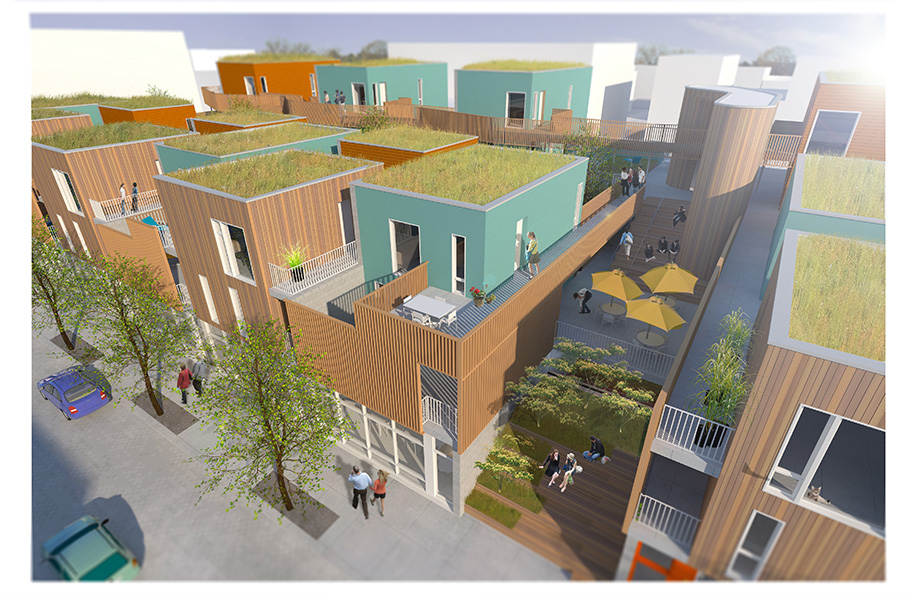
Green roofs mitigate urban heat island, effecting and slowing the release of stormwater into local stormwater and sewer infrastructures.
Open and inviting circulation combines stairs and bleacher seating to promote an active design and healthy habits.
Shared outdoor spaces for group gatherings.
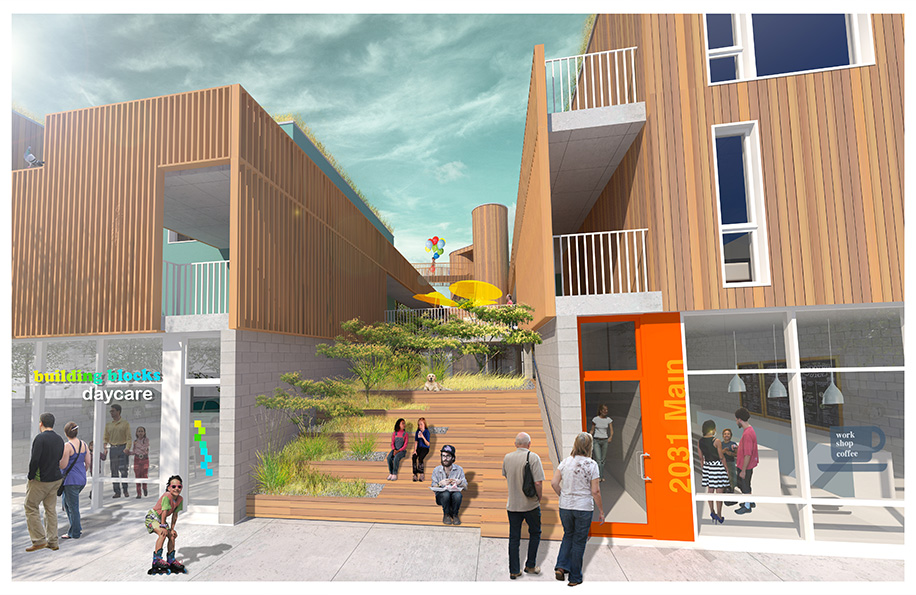
Bleachers provide public space amenity to the neighborhood.
Secure residential entrance provides security for residential units and shared outdoor spaces above.
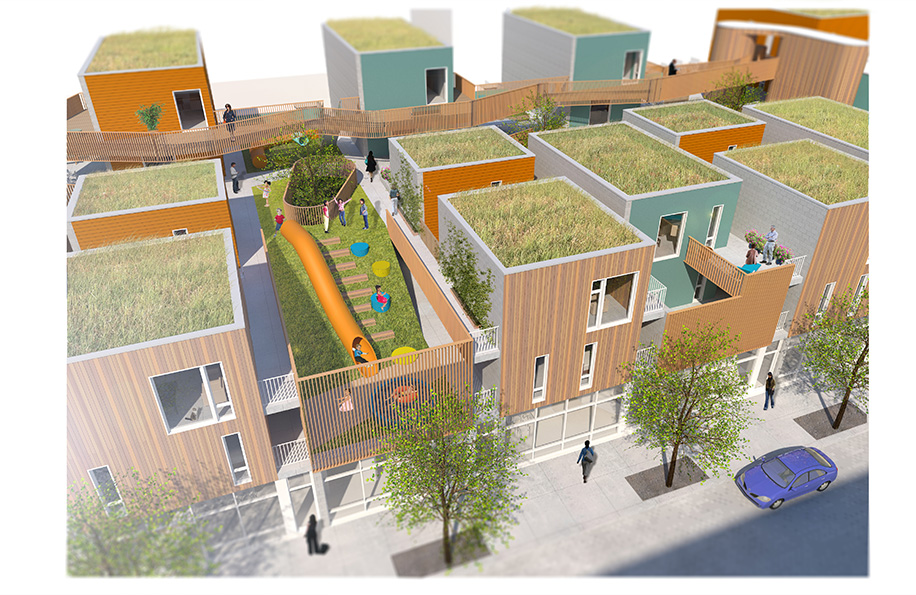
Playground provides outdoor space for children who live at the residence.
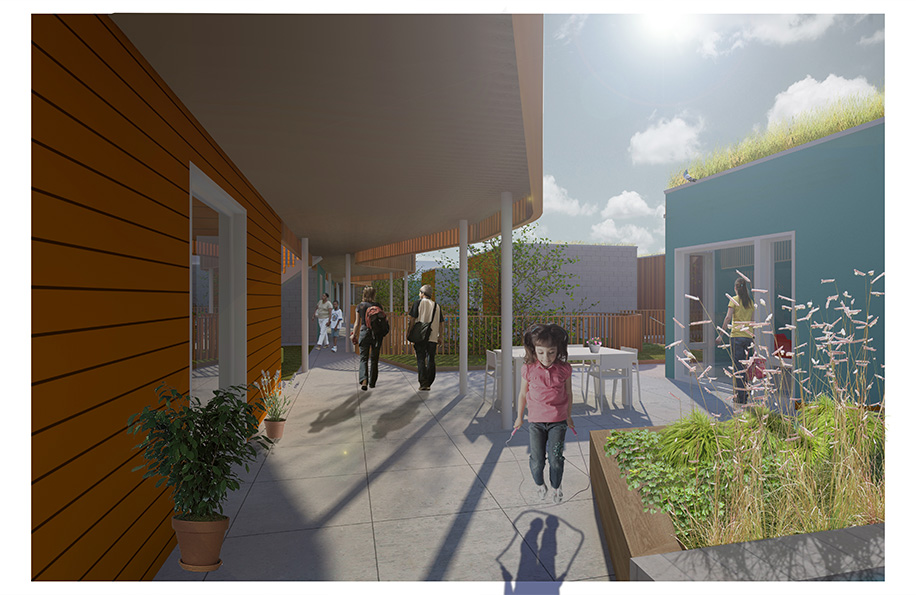
Outdoor rooms provide each resident outdoor space.
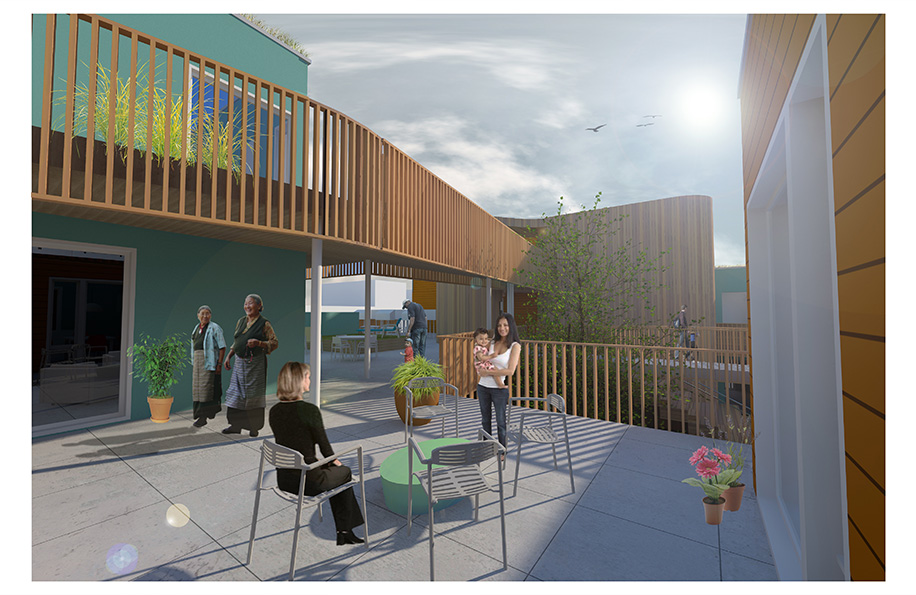
Leverage internal circulation to mimic public qualities of a street, creating opportunities for chance encounters and community building.
Little Free Library encourages sharing and reading.
Openings in deck deliver natural daylight to residential units below.
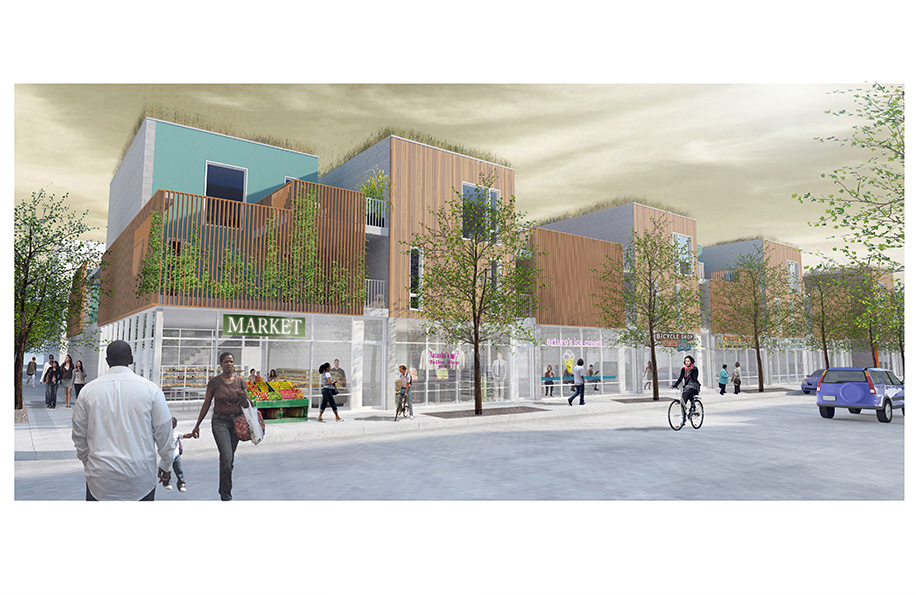
Fresh food market provides healthy options and diminishes food deserts.
Retail bays are paired with entrepreneurial-minded residents to create new small businesses.
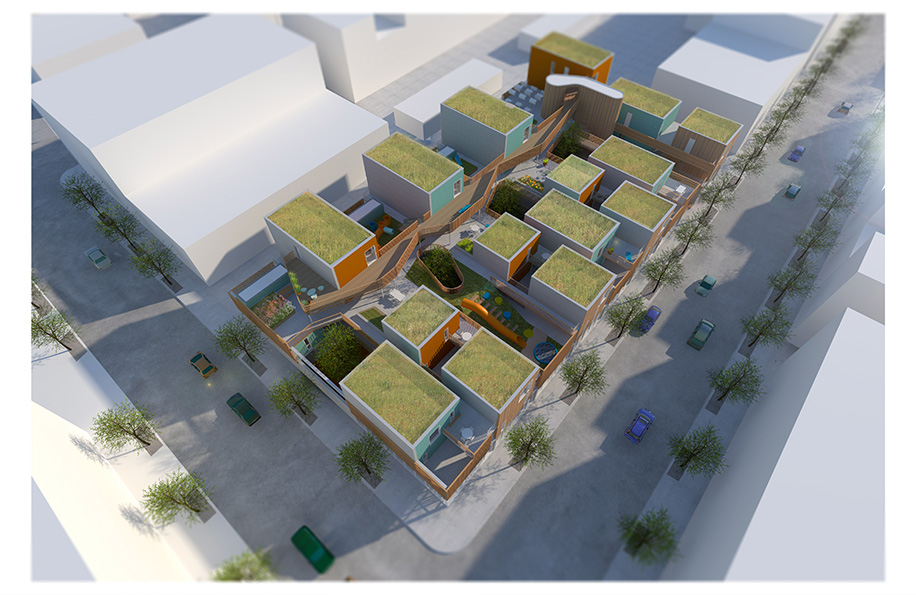
Diversity of unit offering allows options for different family scenarios.
Internal circulation allows full development of site, increasing site and neighborhood density.








